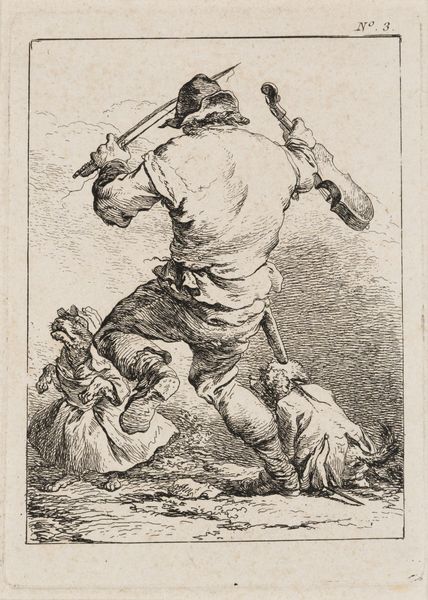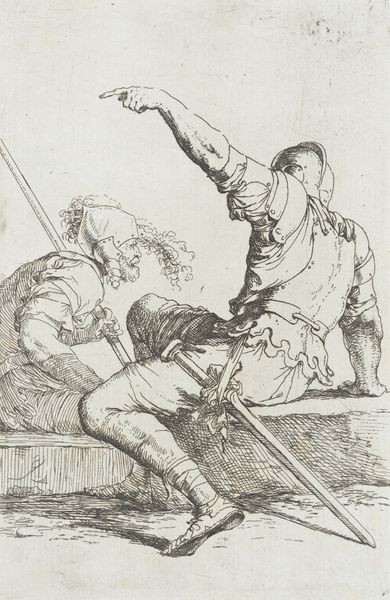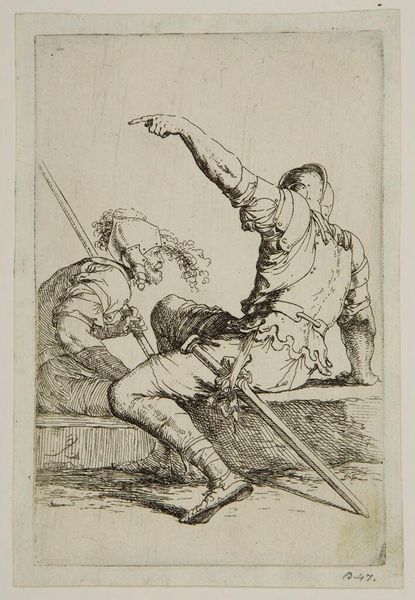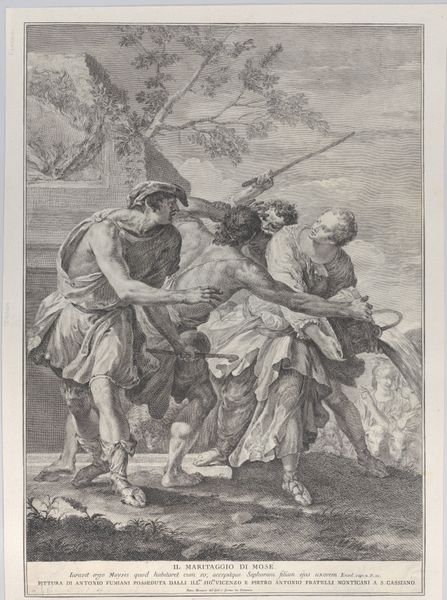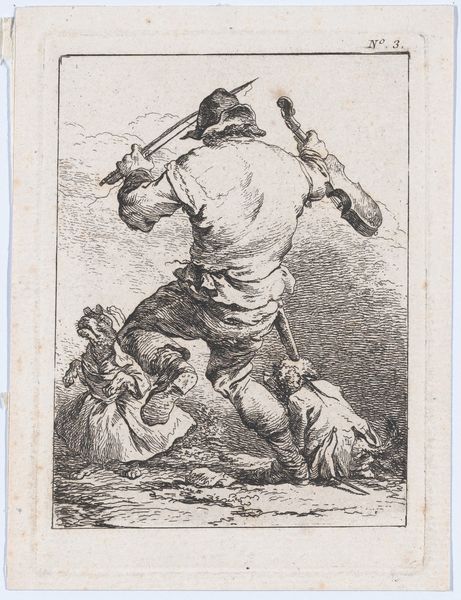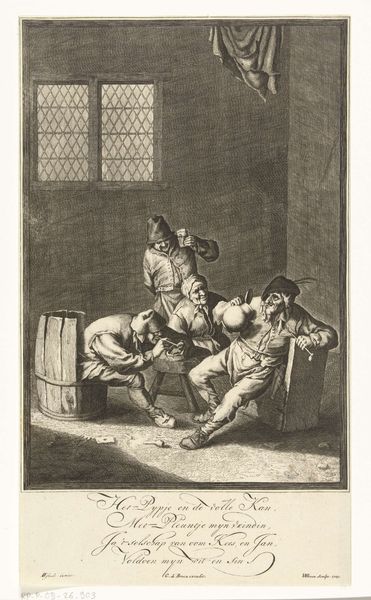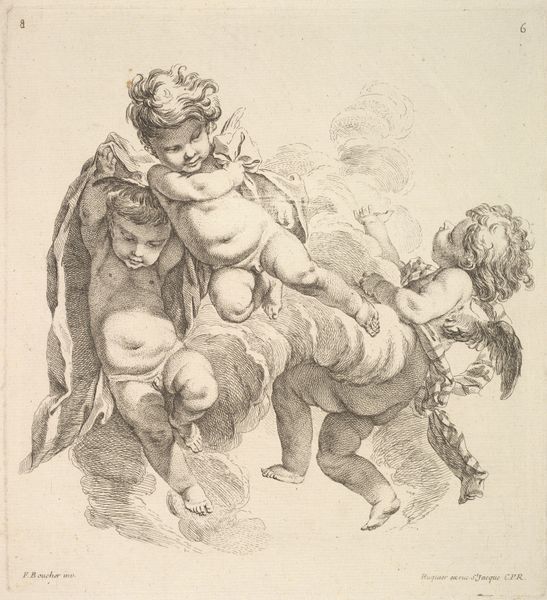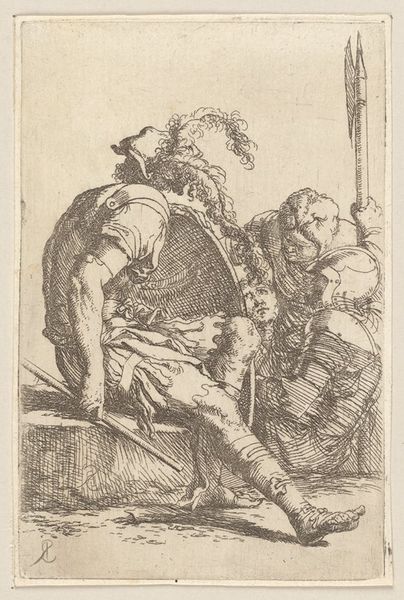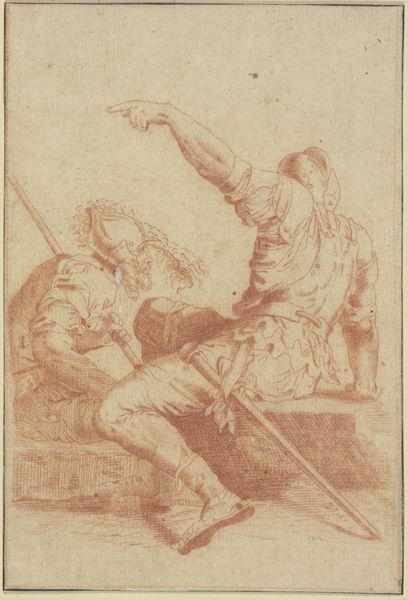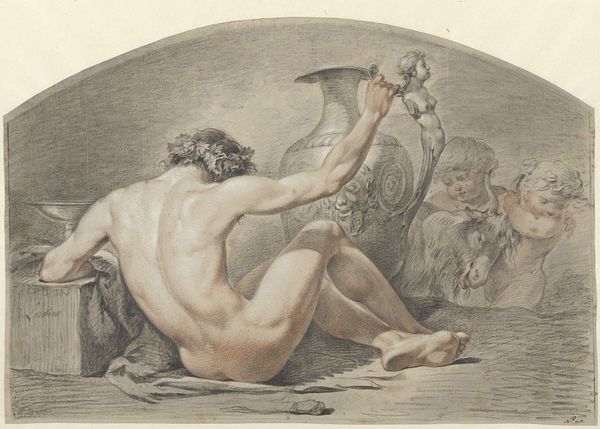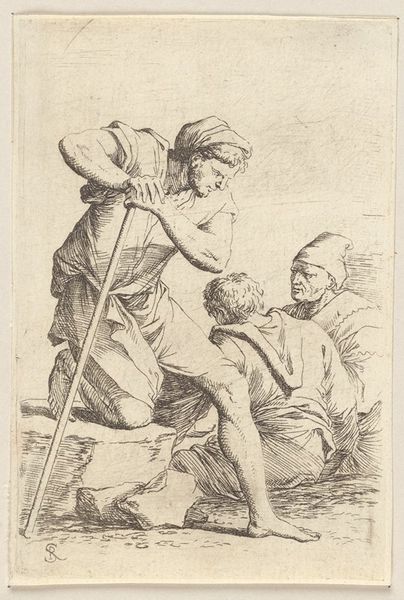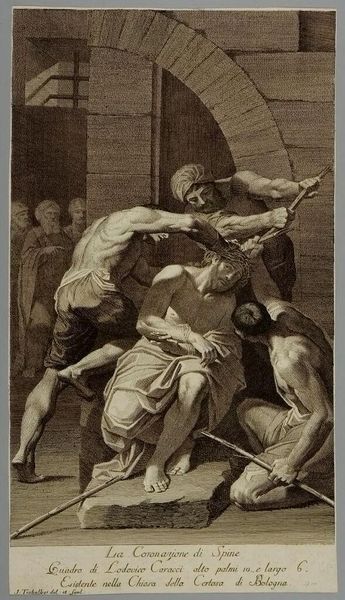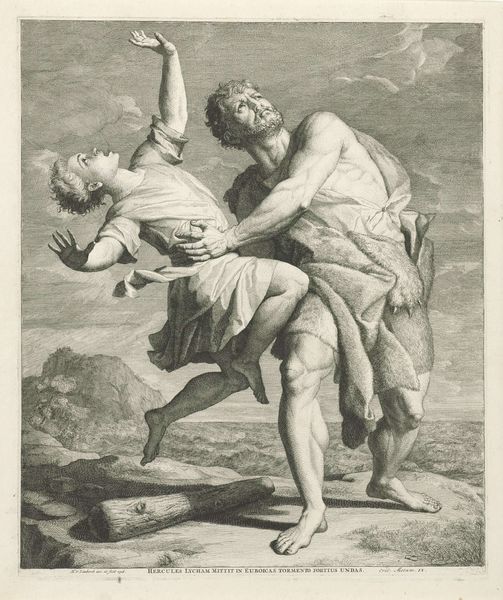
painting, oil-paint
#
figurative
#
painting
#
oil-paint
#
charcoal drawing
#
painted
#
figuration
#
romanticism
#
genre-painting
#
history-painting
#
charcoal
Copyright: Public Domain: Artvee
Editor: This is Francisco de Goya’s "The Forge," painted in oil sometime between 1815 and 1820. The somber color palette makes me feel a bit uneasy, as if the labor depicted is quite difficult. What compositional elements stand out to you in this piece? Curator: The strength of "The Forge" resides primarily in its stark contrasts. Note the dramatic chiaroscuro effect; the figures emerge from a dark, undefined space, drawing our eye to their muscular forms and the implied force of their actions. Observe how Goya utilizes a limited color palette. Predominantly dark tones are punctuated by strategically placed highlights, enhancing the sense of drama. How does the geometry, or lack thereof, influence your interpretation? Editor: I see. The figures seem almost sculpted out of the darkness, but there are few distinct lines or perfect shapes. It's gritty and raw. Curator: Precisely. Goya deliberately avoids idealization, favoring instead a direct, almost brutal, portrayal of labor. Consider the texture: the visible brushstrokes, particularly in the rendering of the figures’ clothing, contribute to a sense of immediacy. Editor: I was so focused on the figures that I didn't pay much attention to the brushstrokes and color choices. Now I see how much those formal qualities add to the mood. Curator: Understanding how Goya manipulates these elements is crucial to grasping the emotional weight of the work. By deconstructing its formal qualities, we can engage with its deeper implications concerning human toil and the dignity of labor. Editor: This was a really helpful lesson in slowing down and looking closely at the canvas. Curator: Indeed. It underscores the notion that the true power of art lies not just in what it represents but in how it is constructed.
Comments
No comments
Be the first to comment and join the conversation on the ultimate creative platform.
